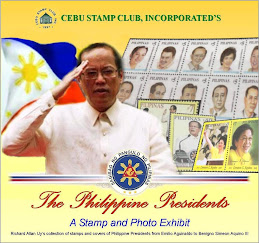Today in Philippine History (Philatelic Edition Series 3):
October 17, 1857
Maximo Viola y Sison (October 17, 1857 - September 3, 1933), physician, writer, member of the Propaganda Movement, and revolutionary leader, was born on October 17, 1857 to Pedro Viola and Isabel Sison in Barrio Sta. Rita, San Miguel, Bulacan.
He finished his pre-medical studies at the University of Santo Tomas and went to Spain and obtained a medical degree at the University of Barcelona in 1882.
He met Dr. Jose Rizal in Barcelona and became his best friend. They travelled and toured Europe together in 1887 and visited museums, art galleries, restaurants and stayed in hotels in various places in Germany, Austria, Hungary, and Switzerland. One of the cities they went was Leitmeritz in Austria, the hometown of Professor Ferdinand Blumentritt.
Viola was one of the leaders of the Propaganda Movement. When Rizal needed funds to publish his first book, Noli Me Tangere, he gave Rizal the money that printed 2,000 copies.
He was also supportive of the other members of the Propaganda Movement like Marcelo H. del Pilar, whom he helped financially.
Viola went back to the Philippines and practiced medicine. When the Philippine Revolution broke out, he fought the Spaniards with his two brothers and stayed at Biak-na-bato.
His idealism didn’t sit well with the Americans when they took over the Philippines. Viola was imprisoned at the Malate Military Prison and then at the Olongapo barracks for his refusal to cooperate.
Even as a political prisoner, he continued being a doctor. He was released from prison on condition that he treat American soldiers afflicted with tropical diseases.
He spent his last years with his practice and was known to give pro-bono medical services to the less fortunate.
Viola ventured into furniture making using Kamagong wood and was given an award in an “exposition” in Manila in the year 1920.
He died of cancer on September 3, 1933 in San Miguel. Dr. Maximo Viola was married to Juana Roura Viola and they had 5 children.
(Design, concept, stamps and research: Richard Allan B. Uy) All rights reserved
Photo credit: wikipedia.org


















No comments:
Post a Comment